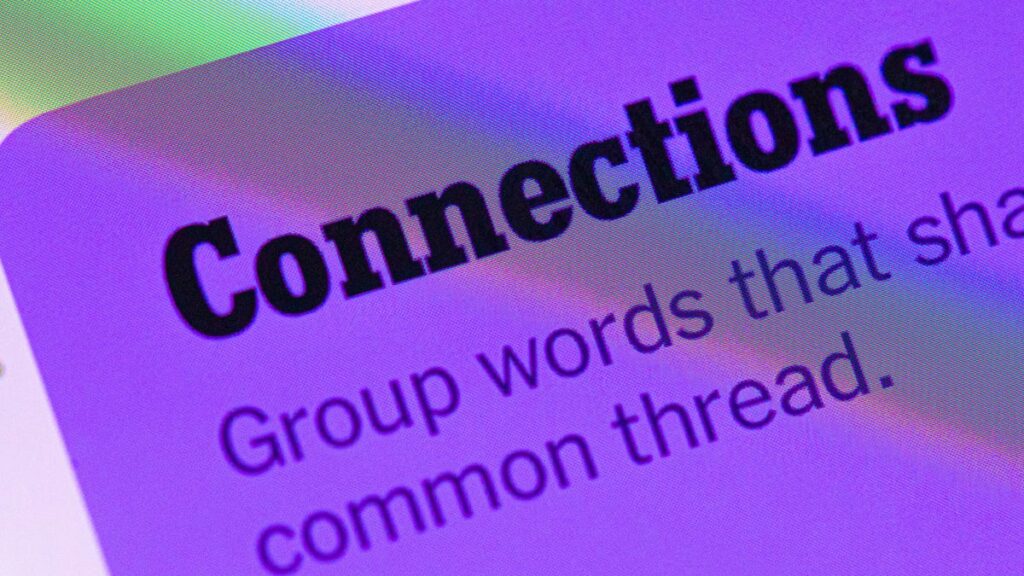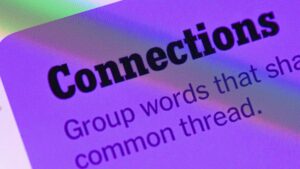
For puzzle enthusiasts, today’s New York Times Connections puzzle presents another intriguing challenge. As of July 9, 2025, puzzle #759 offers a classic twist with its notorious purple category, demanding players to identify a commonality among seemingly unrelated words. This article provides hints and answers for today’s puzzle, alongside strategies for improving your game.
The New York Times has recently introduced a Connections Bot, similar to the popular Wordle Bot. After completing the puzzle, players can receive a numeric score and an analysis of their answers. Subscribers to the Times Games section can track their progress, including the number of puzzles completed, win rates, and streaks.
Hints for Today’s Connections Puzzle
Today’s puzzle features four distinct groupings, each with its own theme. Below are the hints for each group, ranked from the easiest to the most challenging:
- Yellow group hint: Where students hang out.
- Green group hint: Chewing the scenery.
- Blue group hint: Going to catch you!
- Purple group hint: Think frat and sorority names.
Answers to Today’s Connections Puzzle
For those eager to check their answers or who need a little help, here are the solutions for today’s puzzle:
- Yellow group: Parts of a college campus – cafeteria, dorm, library, quad.
- Green group: Exaggerated, as a performance – camp, dramatic, hammy, overdone.
- Blue group: Close in on – corner, surround, trap, tree.
- Purple group: Starts of Greek letters – bet, delt, lamb, the.
Understanding the Puzzle’s Appeal
The NYT Connections puzzle has quickly become a favorite among puzzle solvers, thanks to its unique blend of wordplay and lateral thinking. The challenge lies in recognizing subtle connections between words that may not be immediately apparent. According to gaming experts, this type of puzzle enhances cognitive flexibility and problem-solving skills.
Dr. Emily Chen, a cognitive psychologist, explains, “Puzzles like Connections require players to think outside the box, engaging different areas of the brain. It’s not just about vocabulary but about seeing relationships and patterns.”
Strategies for Mastering Connections
For those looking to improve their performance, consider these expert tips:
- Verbalize the Clues: Say the clue words out loud, pausing before and after each. This can help you hear the words in the context of a phrase.
- Avoid the Obvious: The Connections editors often group words that are used in similar phrases but are not in the same category. Use the “shuffle” button for a fresh perspective.
- Break Down Words: Look for similarities in compound words. Historical puzzles have included words that start with the names of rock bands, for example.
“The Connections editors love to group words together that are used in similar phrasing, like ____ Up.”
The Future of Puzzle Gaming
The introduction of the Connections Bot and the increasing popularity of such puzzles highlight a growing trend in digital gaming. The New York Times continues to innovate in the puzzle space, offering both traditional and modern challenges to its audience. As these games evolve, they not only entertain but also offer cognitive benefits, making them a staple in the daily routines of many.
As players continue to engage with these puzzles, the community around them grows, fostering a shared enthusiasm for wordplay and mental agility. The next steps for the Times may include further enhancements to the gaming experience, potentially integrating more interactive features or expanding the range of puzzles available.
Whether you’re a seasoned player or new to the game, the NYT Connections puzzle offers a rewarding challenge that sharpens the mind and provides a satisfying sense of accomplishment.







